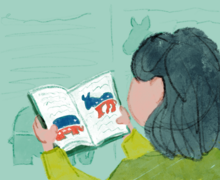Affordable housing reform requires community involvement, transparency
Dan Lyon | Daily Orange File Photo
It is crucial that land use plans following I-81's destruction genuinely reflect the Syracuse community’s needs, our columnist argues. Community members have to work collaboratively.
Get the latest Syracuse news delivered right to your inbox.
Subscribe to our newsletter here.
Amid a lack of affordable housing in Syracuse, the deconstruction of Interstate 81’s viaduct includes an end to federal public housing projects. The $800 million project will replace Pioneer Homes, New York’s oldest public housing project, with low-income residential housing.
Throughout the decision-making process for the future of I-81, there was an emphasis on community involvement and opinion. Despite this, some of the proposals and policies passed contradict the promises made to the community.
Over the last week, the Syracuse Housing Authority considered plans to uproot the current housing next to I-81 and allow for SUNY Upstate Medical to build a new optometry school. Residents immediately pushed back on this proposal, forcing SHA to freeze the plan and leaving residents wondering what is really to come of the land that Pioneer Homes and other buildings occupy next to I-81.
The working titles for the project shine a light on its infancy. From Governor Kathy Hochul referring to it as the “New 15th Ward” to others calling it “Syracuse Surge,” these inconsistencies make it unclear how future funds will be allocated. It also validates the fears those living in the area have about displacement.
If reform is meant to undo wrongs, then Syracuse officials should not continue to make decisions that do not benefit the community.
During the summer of 2023, ReZone Syracuse was passed. Under this law, there are no requirements for affordable housing or protections for those living near the viaduct to be priced out of their homes. This means that instead of protecting the current families living adjacent to the viaduct, ReZone Syracuse puts them at risk of not being able to afford new housing constructed on the very land they once called home.
This law is crucial when it comes to the 24 acres of land that will become available once the community grid is completed. It can potentially cause real estate and rental prices to soar, making the area unaffordable to the previous community that occupied that land.
Without security that the land will be used for affordable housing, where else in Syracuse can new properties be built? Communities living near the viaduct may have resources, jobs and roots in the surrounding area. It’s no secret that once the highway is gone, the land near the university and in close proximity to downtown is extremely profitable.
The development of Syracuse should not lead to the potential displacement of original residents near the soon-to-be-demolished viaduct. With so much emphasis on trying to fix injustices done to the 15th ward, these policies and local leaders are instead repeating history by ignoring the people’s opinions.
As of this month, the New York Appeals Court has dismissed the legal challenge to tear down the highway by the Renew I-81 group. The project will move forward, making it important to start focusing on how the land will be used. Regardless of the highway’s future, those living near the structure will suffer the consequences first.
During the 2024 State of the City Address, Mayor Ben Walsh announced his plans to construct 2,500 units of housing in two years. It’s a project that he says the Community Grid and ReZone Syracuse projects will make possible.

Cindy Zhang | Digital Design Director
The current proposed projects and policies have yet to feel genuine. While there are positive steps, such as Mayor Ben Walsh’s commitment to housing construction, challenges persist, including contradictory policies and the potential for displacement. All members of the community must work collaboratively to ensure that the land use plans genuinely reflect the community’s needs and aspirations.
Striking this balance is essential to avoid repeating historical mistakes and to create an inclusive future for all residents impacted by the changes in Syracuse. Continued transparency, as well as community involvement and a commitment to affordable housing, will be instrumental in achieving these goals.
Sarhia Rahim is a junior Policy Studies Major. Her Column appears bi-weekly. She can be reached at slrahim@syr.edu.
Published on February 8, 2024 at 12:36 am






